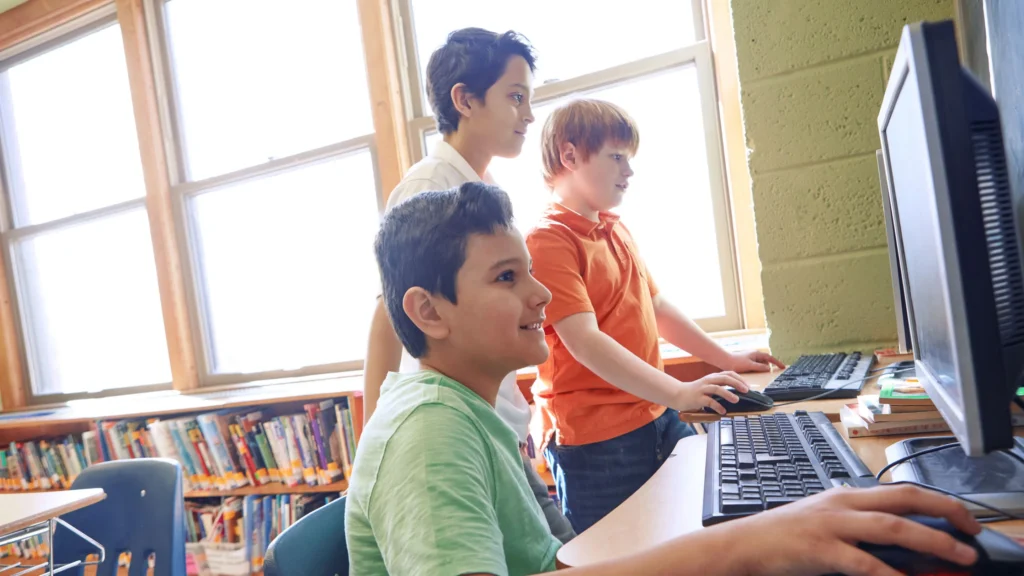In the rapidly evolving landscape of technology, a quiet revolution is underway – one that promises to transform the lives of children with special needs dramatically. Technology is breaking down barriers, from wearable devices to adaptive learning tools, offering new avenues for communication, learning, and independence. This article explores the breadth of these technological innovations and their impact on these extraordinary children.
Table of Contents
Interactive and Adaptive Learning Tools
In the realm of education, technology is redefining learning paradigms for children with special needs. Interactive apps and software tailored to individual learning styles and needs offer engaging and effective education experiences. For example, applications utilizing touch-screen technology enable children with fine motor skill challenges to interact and learn in ways traditional methods don’t allow. Virtual reality (VR) and augmented reality (AR) technologies are emerging as powerful tools for creating immersive learning environments, particularly beneficial for children with attention deficit disorders or those requiring sensory integration therapy.
Wearable Technologies
Wearable technologies are at the forefront of this revolution. For instance, smartwatches equipped with GPS tracking and SOS features have become indispensable for parents of children with Autism Spectrum Disorder (ASD), who may wander. Beyond location tracking, wearables like sensory wristbands offer real-time monitoring of physiological responses, alerting caregivers to potential stress or anxiety triggers in children with sensory processing disorders. Health monitoring bands also play a crucial role, especially for children with chronic medical conditions, by keeping track of heart rate, oxygen levels, and other vital parameters.
Assistive Communication Technologies
Communication technologies have opened up new worlds for children who face challenges in expressing themselves. Augmentative and Alternative Communication (AAC) devices, ranging from simple picture boards to sophisticated speech-generating devices, empower non-verbal children to communicate their thoughts and needs. Recent advancements in this field have seen the integration of eye-tracking technology, enabling children with severe physical limitations to communicate using just their eye movements. Additionally, mobile apps with customizable interfaces have made communication aids more accessible and user-friendly.
Environmental Control and Accessibility Tools
The technology has also made strides in making the world more accessible to children with special needs. Smart home technologies, for example, allow children with physical limitations to control their environment – lights, temperature, and entertainment systems can be operated with voice commands or adapted controllers. Computer access technologies like adaptive keyboards and specialized software are enabling children with learning disabilities to use computers effectively, thereby aiding their education and communication.
Future Trends and Research
Looking to the future, the potential for technology to further enhance the lives of children with special needs is immense. Robotics, for instance, is an area witnessing rapid growth. Therapeutic robots designed to engage children with ASD in social interaction are showing promising results. Furthermore, integrating artificial intelligence in educational and therapeutic tools will likely offer more personalized and adaptive learning experiences. However, this future hinges on continuous research, development, and, importantly, accessibility to ensure these technologies reach those who most need them.
The confluence of technology and special needs care is an evolving narrative of empowerment, inclusion, and innovation. These technologies are not just tools; they represent new horizons of hope and capability for children with special needs. As we continue to push the boundaries of what technology can achieve, it becomes increasingly vital to ensure these advancements are inclusive, accessible, and tailored to the unique challenges faced by these children.
This journey into the world of advanced technologies for children with special needs is more than an exploration; it’s a call to collective action. We invite educators, parents, technologists, and policymakers to join this movement. Share your experiences, contribute to the dialogue, or support developing and disseminating these technologies. Together, we can build a more inclusive world where every child has the tools to reach their fullest potential.

